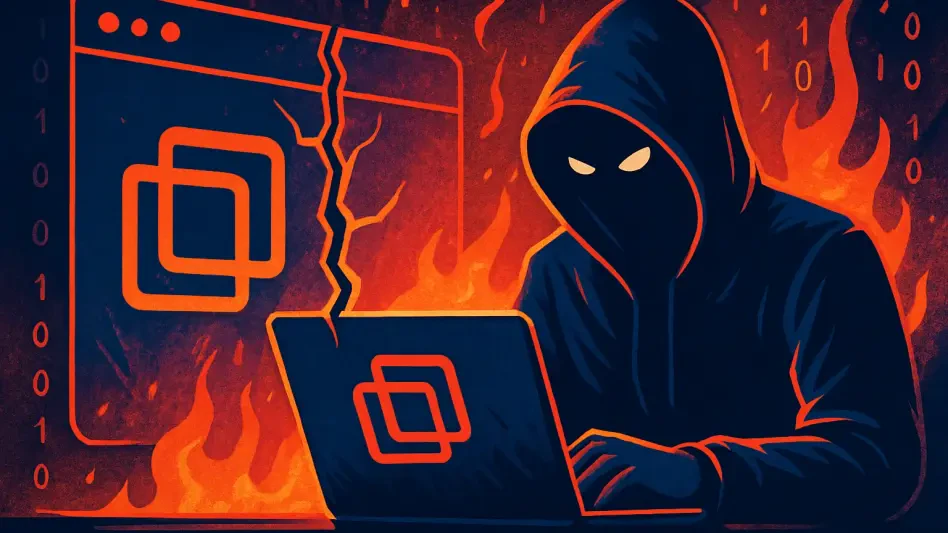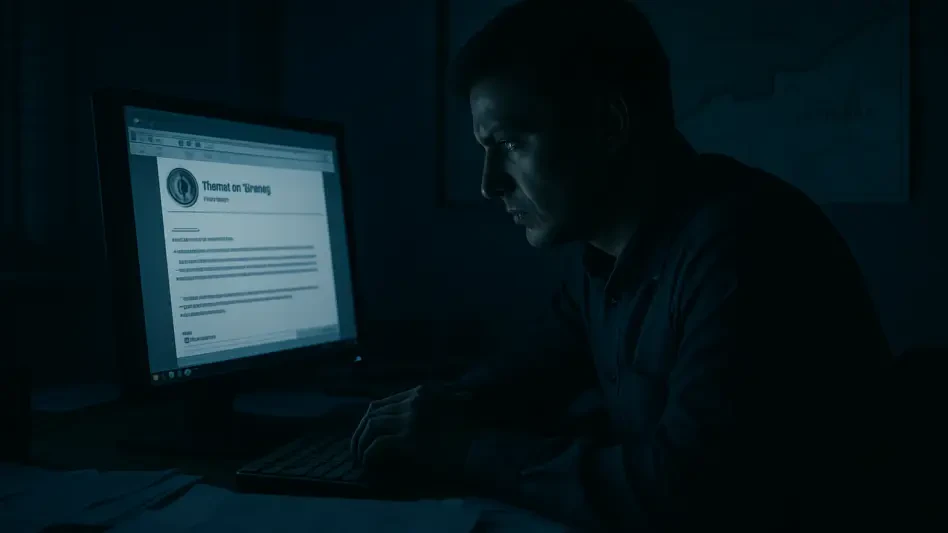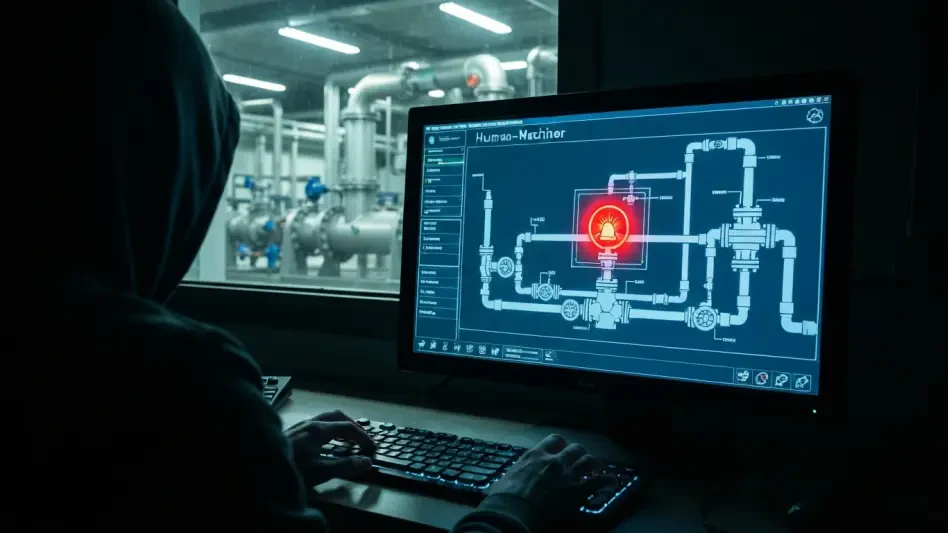In an alarming development for cybersecurity professionals, a critical zero-day vulnerability has emerged in VMware’s widely used software, posing a significant threat to organizations managing hybrid-cloud environments. Identified as CVE-2025-41244, this flaw affects VMware Tools (specifically open-vm-tools) and VMware Aria Operations’ Service Discovery Management Pack (SDMP), enabling attackers to escalate privileges locally and execute remote code with devastating ease. Since its detection, active exploitation by the sophisticated threat group UNC5174 has been observed, amplifying the urgency for IT teams to respond. The vulnerability’s impact is profound, as it allows unprivileged users to gain root-level access without authentication, exploiting a fundamental design flaw in service discovery scripts. This scenario underscores the precarious balance between operational functionality and security in enterprise software, setting the stage for a deeper exploration of the flaw’s mechanics, its real-world implications, and the critical steps needed to mitigate the risk.
Unpacking the Vulnerability’s Mechanics
The root of this critical issue lies in a seemingly innocuous component of VMware’s software: the get-versions.sh script used by both VMware Tools and Aria Operations’ SDMP. Within this script, the get_version() function employs overly broad regular expression patterns, utilizing the non-whitespace shorthand \S. This design choice inadvertently includes user-writable directories, such as /tmp/httpd, in its search path, creating a dangerous opportunity for exploitation. Classified under CWE-426 (Untrusted Search Path), the flaw allows attackers to place malicious binaries in these directories. When executed within the VMware context, these binaries run with elevated privileges, effectively granting attackers root access. A proof-of-concept exploit written in Go demonstrates the simplicity of this attack, showing how an unprivileged process can open a listening socket in a writable path, which, when invoked by VMware components, spawns a root shell via a UNIX socket. This ease of exploitation highlights a critical oversight in input validation that demands immediate attention from software developers and security teams alike.
Further compounding the issue is the automatic nature of exploitation in certain configurations, particularly within Aria Operations. In credential-based mode, the exploit can trigger every five minutes without user intervention, while in credential-less mode, the privileged context of open-vm-tools becomes the entry point for attackers. The vulnerability’s severity is underscored by its CVSS 3.1 score of 7.8, reflecting both the potential impact and the trivial effort required to exploit it. Active exploitation by UNC5174, a group known for targeting hybrid-cloud environments, adds a layer of urgency, as their tactics often involve long-term persistence and data exfiltration. This situation serves as a stark reminder of how minor logic errors in scripts can cascade into catastrophic security breaches, especially in enterprise tools designed for system monitoring. Organizations must recognize that such flaws are not isolated incidents but part of a broader trend of insufficiently secured configurations in critical infrastructure software.
Real-World Impact and Threat Actor Involvement
The real-world implications of CVE-2025-41244 are far-reaching, particularly for organizations relying on VMware hypervisors to manage hybrid-cloud setups. The ability to achieve local privilege escalation (LPE) and remote code execution without authentication represents a severe risk, as it can lead to complete system compromise. Once attackers gain root access, they can deploy malware, exfiltrate sensitive data, or establish persistent backdoors for future exploitation. The involvement of UNC5174, a sophisticated threat group, elevates the concern, as their operations often target high-value assets in enterprise environments. Since mid-October of last year, evidence of active exploitation has surfaced, suggesting that many systems may already be compromised. This vulnerability’s exploitation is not a theoretical risk but a present danger, with potential impacts ranging from operational downtime to significant financial losses due to breaches. IT security teams must prioritize rapid assessment of their exposure to prevent falling victim to such advanced persistent threats.
Beyond the immediate technical fallout, this incident highlights a systemic challenge in cybersecurity: the tension between functionality and security in enterprise software. Service discovery scripts, while essential for monitoring and managing systems, often operate with overly permissive configurations that attackers can exploit. The case of CVE-2025-41244 exemplifies how even small oversights, such as inadequate path validation, can open the door to catastrophic privilege escalations. As threat actors like UNC5174 continue to refine their techniques, leveraging zero-day vulnerabilities for maximum impact, organizations face increasing pressure to adopt a proactive security posture. This means not only addressing specific flaws but also rethinking how critical software components are designed and deployed. The broader lesson here is that security must be embedded at every stage of software development, especially for tools integral to hybrid-cloud operations, to prevent similar vulnerabilities from emerging in the future.
Mitigation Strategies and Future Safeguards
Addressing the threat posed by CVE-2025-41244 requires immediate action from affected organizations. Broadcom, the steward of VMware’s software, has released patches to close this critical gap, and applying these updates is the first line of defense for IT teams. Beyond patching, proactive monitoring has become essential, with a focus on child processes of vmtoolsd or Aria SDMP for any unusual activity that might indicate exploitation. Hardening filesystem permissions to restrict writes to vulnerable directories like /tmp/httpd has also proven to be a vital step in reducing attack surfaces. Additionally, enforcing strict network segmentation for guest VMs helps limit an attacker’s ability to move laterally within a compromised environment. These layered defenses, implemented swiftly, are crucial in mitigating the risk of further exploitation by groups like UNC5174, whose tactics often rely on exploiting unpatched systems. The urgency of these measures reflects the high stakes of zero-day threats in hybrid-cloud setups.
Looking ahead, the response to this vulnerability offers valuable lessons for strengthening cybersecurity frameworks. Organizations are encouraged to prioritize patch management as a core component of their security strategy, ensuring that updates are deployed promptly across all systems. Beyond reactive measures, adopting a mindset of continuous monitoring and regular security audits has emerged as a key takeaway to detect and address potential flaws before they can be exploited. Investing in advanced threat detection tools to identify suspicious behavior in real-time has also become a recommended practice. Furthermore, the incident underscores the importance of designing software with security as a foundational principle, particularly for tools operating in privileged contexts. As the threat landscape continues to evolve, fostering collaboration between software vendors and security researchers will be essential to anticipate and neutralize emerging risks, ensuring that hybrid-cloud environments remain resilient against sophisticated attacks.








